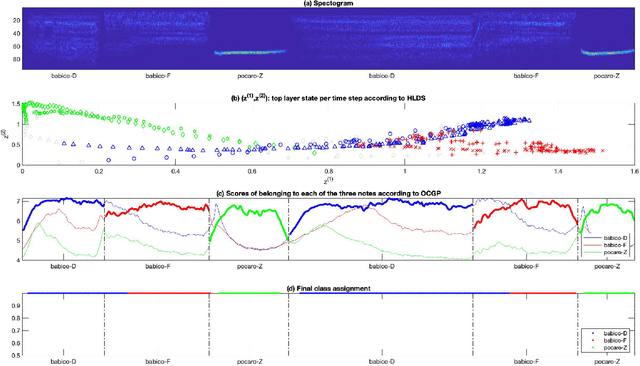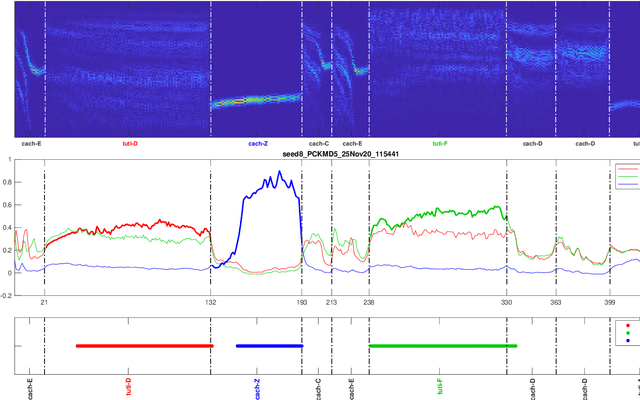Kathryn E. Sieving
Hierarchical Linear Dynamical System for Representing Notes from Recorded Audio
Feb 27, 2022


Abstract:We seek to develop simultaneous segmentation and classification of notes from audio recordings in presence of outliers. The selected architecture for modeling time series is hierarchical linear dynamical system (HLDS). We propose a novel method for its parameter setting. HLDS can potentially be employed in two ways: 1) simultaneous segmentation and clustering for exploring data, i.e. finding unknown notes, 2) simultaneous segmentation and classification of audio recording for finding the notes of interest in the presence of outliers. We adapted HLDS for the second purpose since it is an easier task and still a challenging problem, e.g. in the field of bioacoustics. Each test clip has the same notes (but different instances) as of the training clip and also contain outlier notes. At test, it is automatically decided to which class of interest a note belongs to if any. Two applications of this work are to the fields of bioacoustics for detection of animal sounds in audio field recordings and also to musicology. Experiments have been conducted for segmentation and classification of both avian and musical notes from recorded audio.
Uncertainty quantification for multiclass data description
Aug 29, 2021


Abstract:In this manuscript, we propose a multiclass data description model based on kernel Mahalanobis distance (MDD-KM) with self-adapting hyperparameter setting. MDD-KM provides uncertainty quantification and can be deployed to build classification systems for the realistic scenario where out-of-distribution (OOD) samples are present among the test data. Given a test signal, a quantity related to empirical kernel Mahalanobis distance between the signal and each of the training classes is computed. Since these quantities correspond to the same reproducing kernel Hilbert space, they are commensurable and hence can be readily treated as classification scores without further application of fusion techniques. To set kernel parameters, we exploit the fact that predictive variance according to a Gaussian process (GP) is empirical kernel Mahalanobis distance when a centralized kernel is used, and propose to use GP's negative likelihood function as the cost function. We conduct experiments on the real problem of avian note classification. We report a prototypical classification system based on a hierarchical linear dynamical system with MDD-KM as a component. Our classification system does not require sound event detection as a preprocessing step, and is able to find instances of training avian notes with varying length among OOD samples (corresponding to unknown notes of disinterest) in the test audio clip. Domain knowledge is leveraged to make crisp decisions from raw classification scores. We demonstrate the superior performance of MDD-KM over possibilistic K-nearest neighbor.
 Add to Chrome
Add to Chrome Add to Firefox
Add to Firefox Add to Edge
Add to Edge